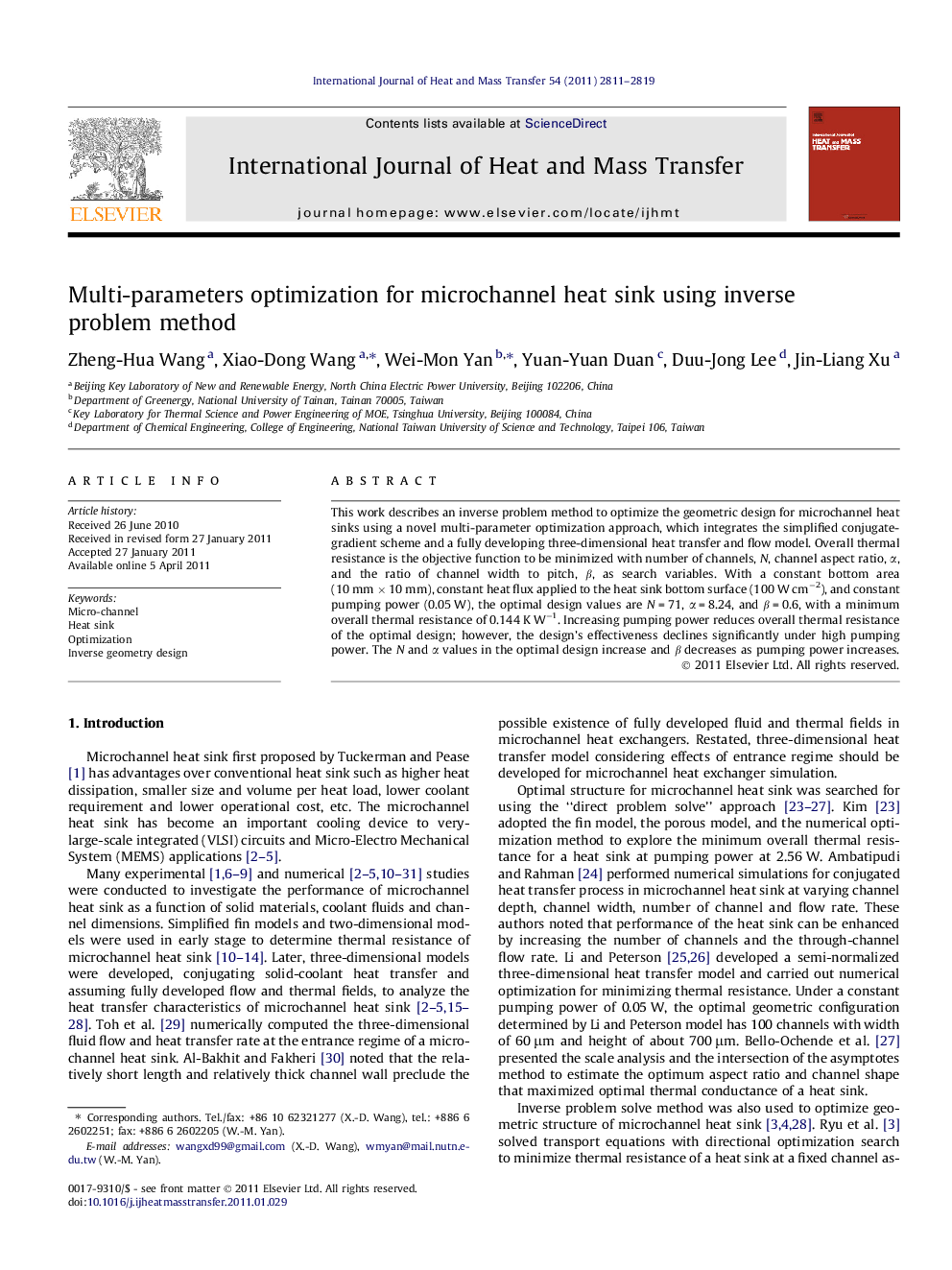| Article ID | Journal | Published Year | Pages | File Type |
|---|---|---|---|---|
| 660091 | International Journal of Heat and Mass Transfer | 2011 | 9 Pages |
This work describes an inverse problem method to optimize the geometric design for microchannel heat sinks using a novel multi-parameter optimization approach, which integrates the simplified conjugate-gradient scheme and a fully developing three-dimensional heat transfer and flow model. Overall thermal resistance is the objective function to be minimized with number of channels, N, channel aspect ratio, α, and the ratio of channel width to pitch, β, as search variables. With a constant bottom area (10 mm × 10 mm), constant heat flux applied to the heat sink bottom surface (100 W cm−2), and constant pumping power (0.05 W), the optimal design values are N = 71, α = 8.24, and β = 0.6, with a minimum overall thermal resistance of 0.144 K W−1. Increasing pumping power reduces overall thermal resistance of the optimal design; however, the design’s effectiveness declines significantly under high pumping power. The N and α values in the optimal design increase and β decreases as pumping power increases.
